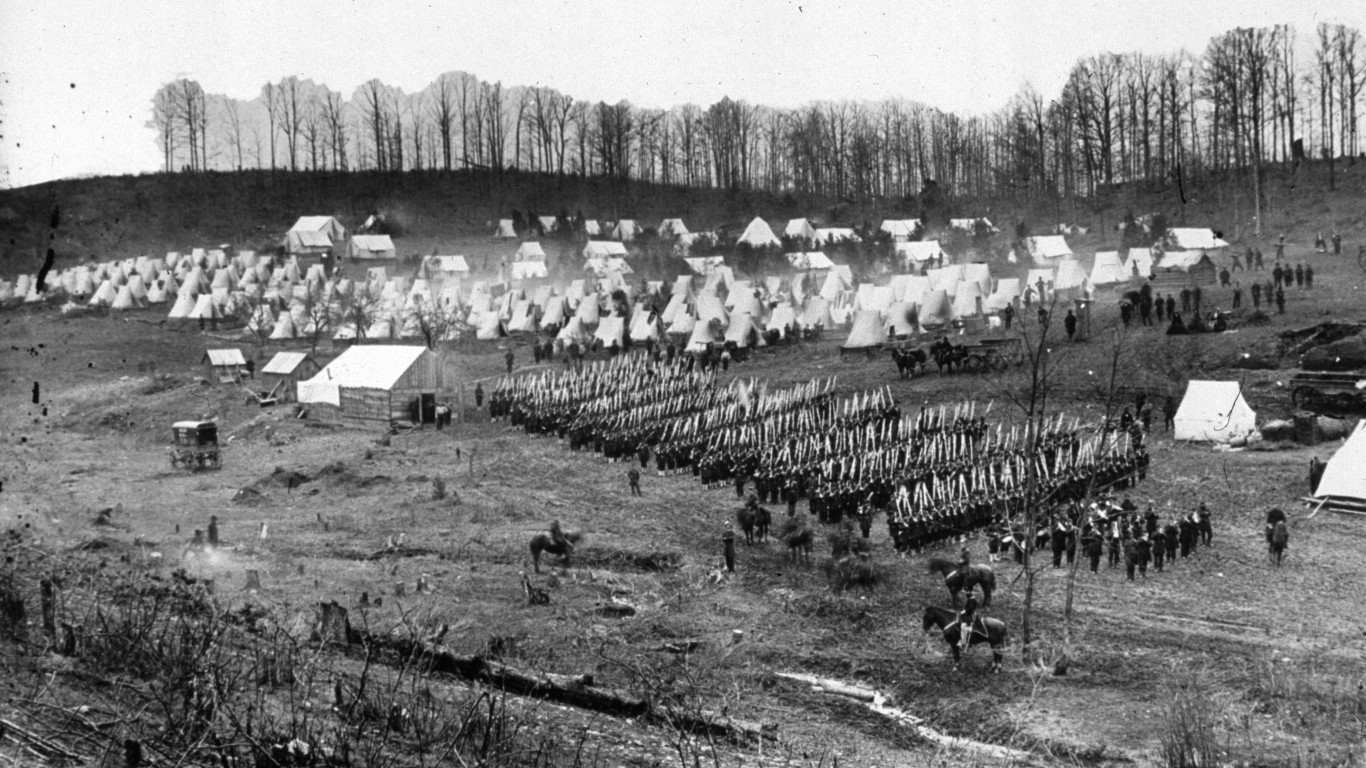
The U.S. has fought wars ever since its founding – since before its founding, really, since it took a war for us to win our independence from Britain and establish the nation in the first place. But of all those conflicts, the Civil War took the highest toll.
From 1861 to 1865, the brutal internecine conflict fought on American soil claimed the lives of almost 250,000 combatants on both sides – and the total casualty count was at least 620,000, and according to recent scholarship may have exceeded 800,000. It should be noted that “casualties” includes those killed in battle deaths but also those wounded, captured, or missing in action, as well as those who died away from the battlefield from accident or disease. (These are the states with the most Civil War deaths.)
Battles raged on both Southern and Northern lands, and each inflicted huge losses on both sides. But the 10 detailed here stand out as the most violent.
To determine which battles to include on our list, 24/7 Tempo reviewed statistics on the data site Statista, which in turn drew its statistics from the American Battlefield Trust, an organization that preserves America’s battlegrounds, and the U.S. Department of Defense.
At the cost of 3,654 lives, the Battle of Antietam ranks as the deadliest one-day battle in U.S. history until World War II. But a Union victory on the battlefield in Maryland gave President Abraham Lincoln the political clout he needed to release the Emancipation Proclamation.
With 19,233 casualties and 1,611 deaths, the Siege of Vicksburg gave the North a pivotal victory, as well. When General Ulysses S. Grant took over the port city on the Mississippi, the Union gained control of the river and cut off a vital supply line to the South.
The true turning point of the war came in the small town of Gettysburg, Pennsylvania. Over three days from July 1 to July 3, 1863, the Union army under George G. Meade and Confederate forces led by Robert E. Lee waged a fierce battle. In the end, the Union prevailed, but a total on both sides of more than 7,000 soldiers (and as many as 5,000 horses) were killed. By stopping Lee’s army from invading the North, the Union crushed the South’s hopes of a victory. Lee would fight other victorious battles, but Gettysburg paved the way for the Union’s eventual victory. (These were the largest battles of the Civil War.)

10. Siege of Vicksburg
> When: May 18-July 4, 1863
> Total casualties: 19,233
> Fatalities: 1,611
For 47 days, Union forces led by Ulysses S. Grant fought an intense battle against an entrenched Confederate army at Vicksburg. But it wasn’t Grant’s first attempt at taking over the key port city. In the winter of 1862-63, the Union general failed to overtake Vicksburg. His effort in the spring was successful. Due to its location along the Mississippi River, Vicksburg provided an essential supply route for the Confederacy. By gaining control of the city, the Union cut off that supply line. Abraham Lincoln termed the Vicksburg victory “the key to the war.”
[in-text-ad]
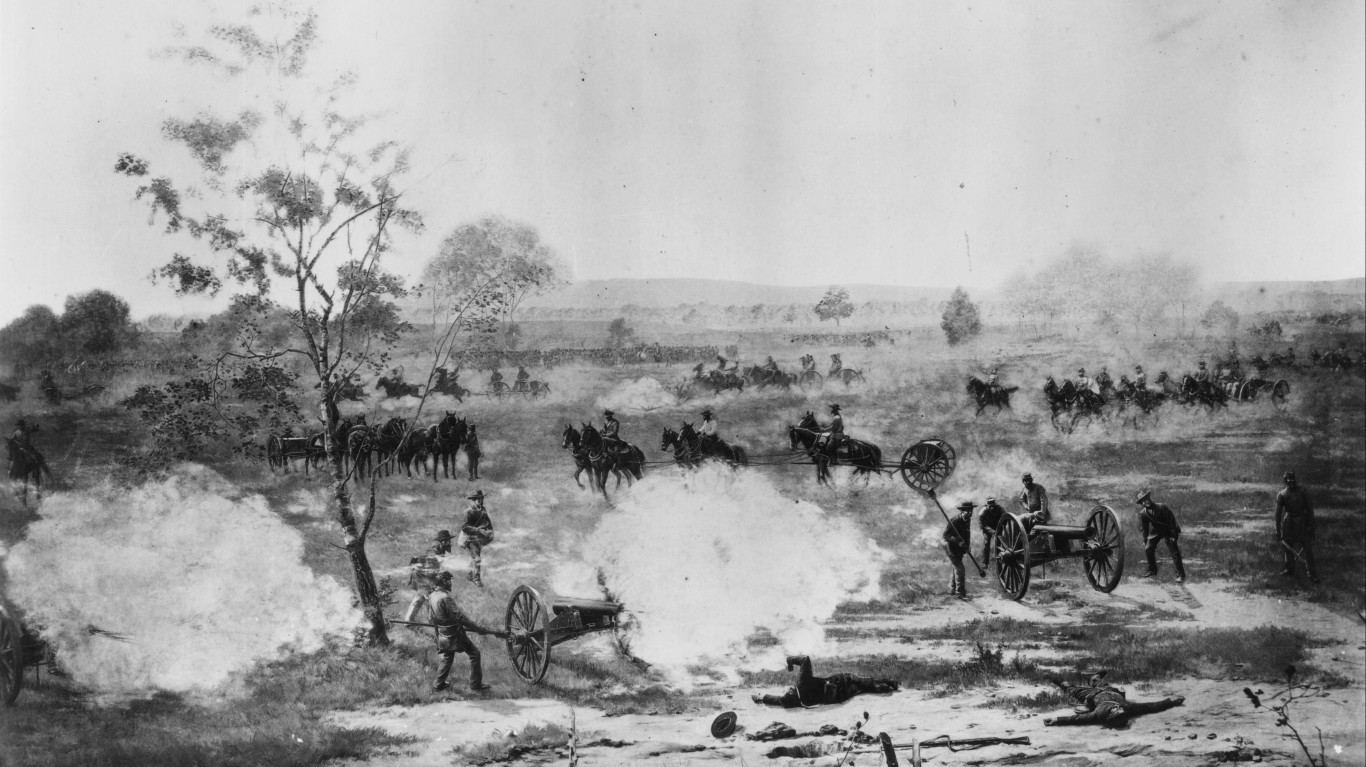
9. Second Battle of Bull Run
> When: Aug. 28-30, 1862
> Total casualties: 22,180
> Fatalities: 2,843
The Second Battle of Bull Run (also known as the Battle of Second Manassas) proved to be a major victory for the South and General Robert E. Lee. However, it cost more than 1,000 Confederate lives. Commanding the Army of Northern Virginia, Lee beat numerically superior forces led by Union Major General John Pope and General George McClellan. Lee’s victory enabled him to take his army across the Potomac and into western Maryland, where he and McClellan would battle again at Antietam.
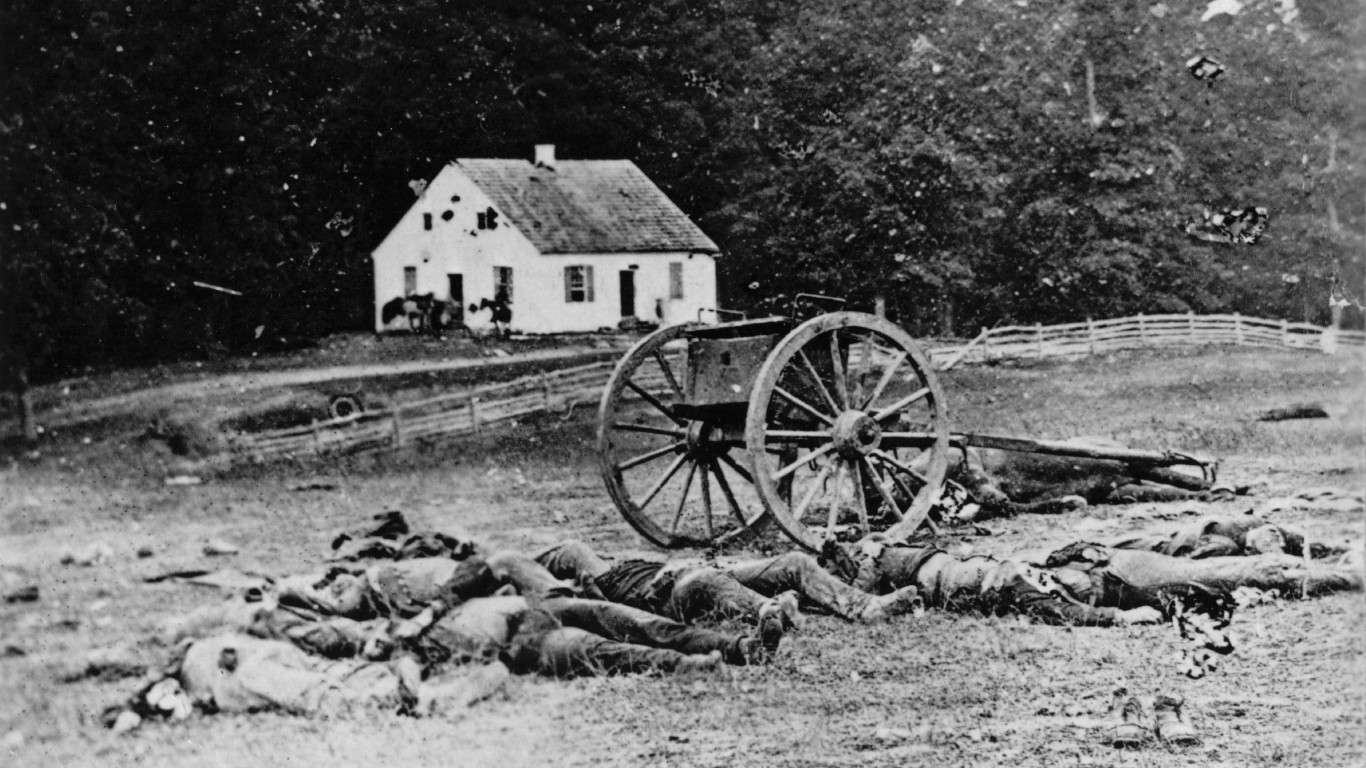
8. Battle of Antietam
> When: Sept. 17, 1862
> Total casualties: 22,717
> Fatalities: 3,654
In September of 1862, President Abraham Lincoln was planning to announce the Emancipation Proclamation, but he needed a Union victory to bolster his support. On Sept. 17, tRobert E. Lee and George McClellan were once again pitted against each other at Antietam Creek near Sharpsburg, Maryland. The Union declared victory in the bloodiest one-day battle in U.S. history until World War II. Despite the toll, the Union win gave Lincoln the victory he needed to release his proclamation.
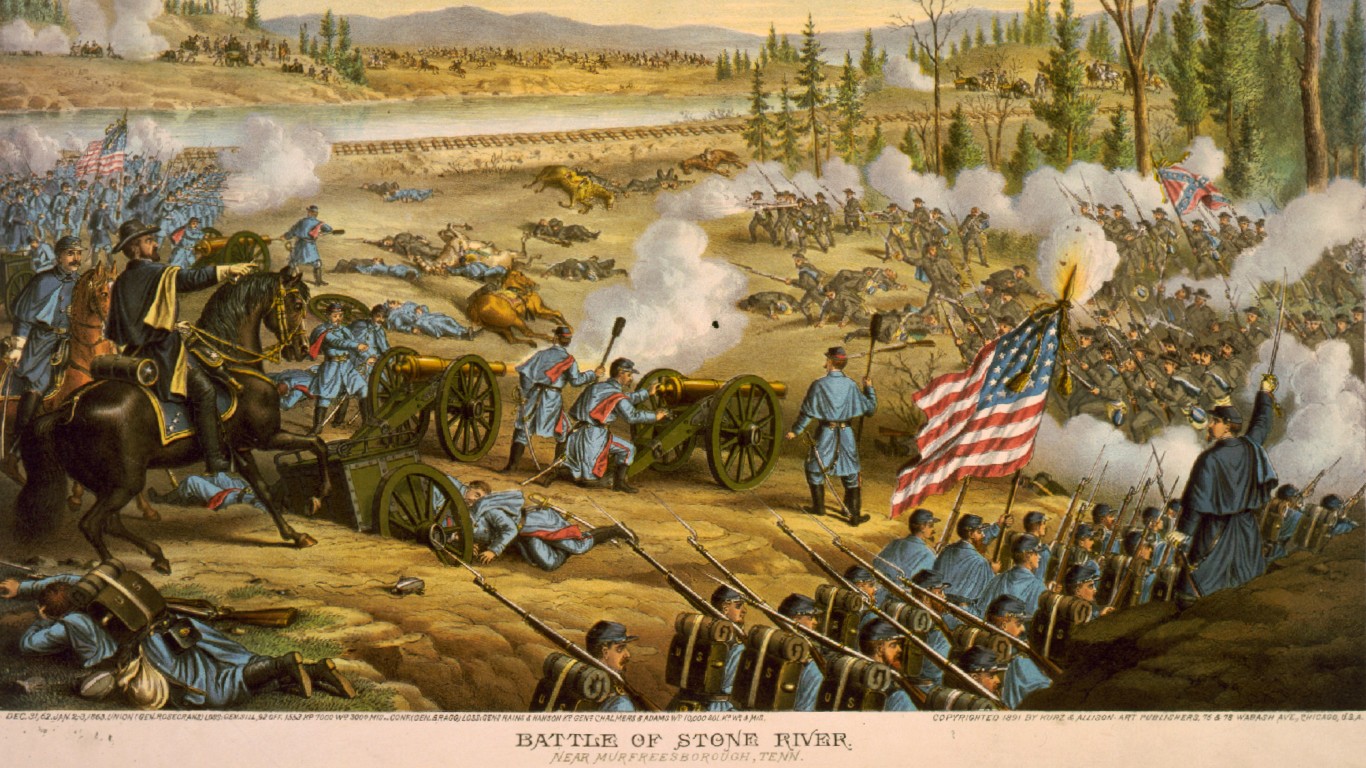
7. Battle of Stones River
> When: Dec. 31, 1862-Jan. 2 1863
> Total casualties: 23,515
> Fatalities: 2,971
After their defeat at Fredericksburg, Virginia, the Union Army was in desperate need of a victory. When Union forces led by Major General William Rosecrans clashed with a Confederate army commanded by General Braxton Bragg, the two sides battled back and forth near Murfreesboro, Tennessee. On Jan. 2, 1863, Union forces achieved a much-needed victory.
[in-text-ad-2]
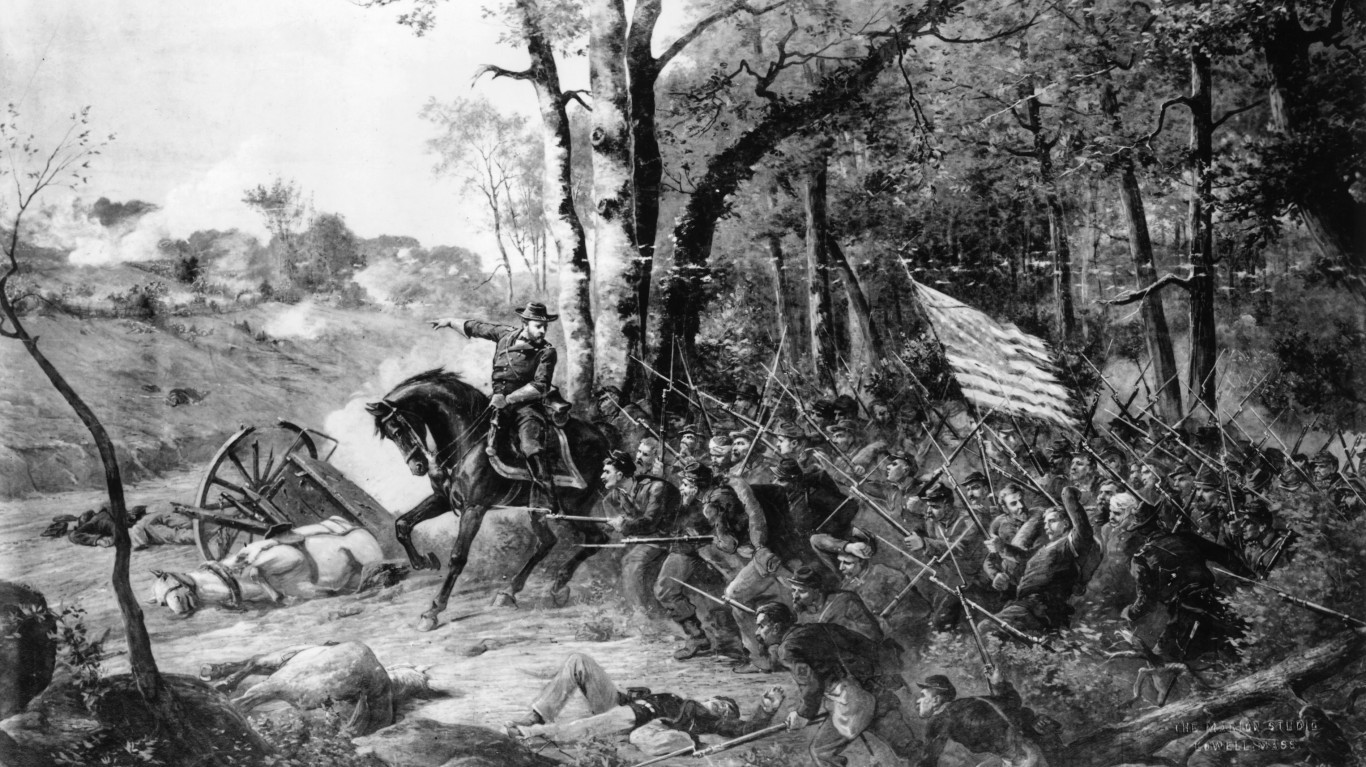
6. Battle of Shiloh
> When: April 6-7, 1862
> Total casualties: 23,746
> Fatalities: 3,482
An early battle in the Civil War, the Battle of Shiloh in southwestern Tennessee was one of the deadliest. The Confederate army scored an initial victory against Ulysses S. Grant’s Union army in a surprise attack. But a Union counterattack proved decisive. The battle gets its name from Shiloh Church near which the fighting occurred.
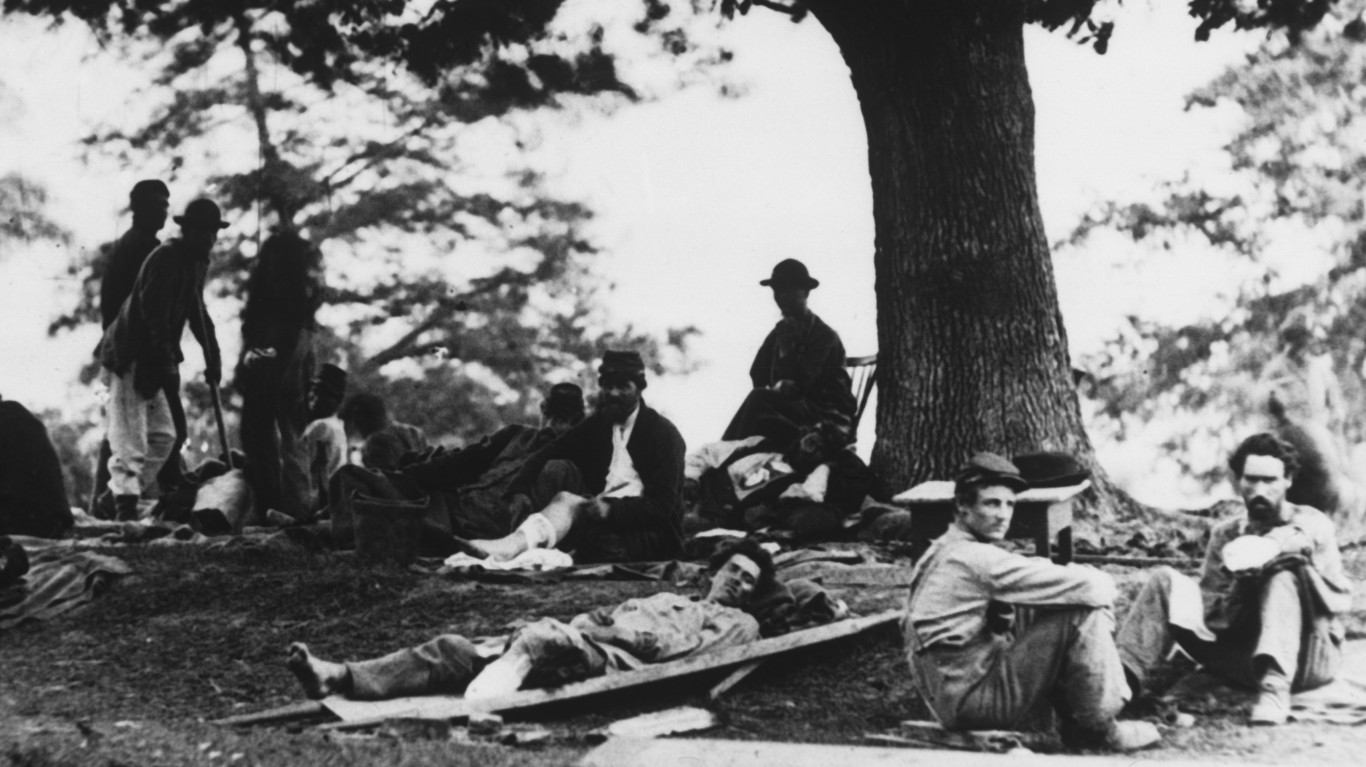
5. Battle of Chancellorsville
> When: April 30-May 6, 1863
> Total casualties: 24,000
> Fatalities: 3,418
General Robert E. Lee cemented his reputation as a tactical expert at the Battle of Chancellorsville in Spotsylvania County, Virginia. By splitting his army into two forces, he defeated an army twice the size of his led by Union General Joseph Hooker. The battle is also famous for having been the last fought by Confederate General Thomas “Stonewall” Jackson, who was shot during the fighting and succumbed to pneumonia eight days later.
[in-text-ad]

4. Battle of the Wilderness
> When: May 5-7, 1864
> Total casualties: 29,800
> Fatalities: 3,723
Newly appointed General in Chief of the Union Army Ulysses S. Grant confronted General Robert E. Lee in the dense woods in northern Virginia known as the Wilderness. The thick brush negated the Union’s numerical advantage, but after two days of fierce fighting, the battle was considered a draw. Grant, however, refused to retreat and continued his march toward the Confederate capital of Richmond.
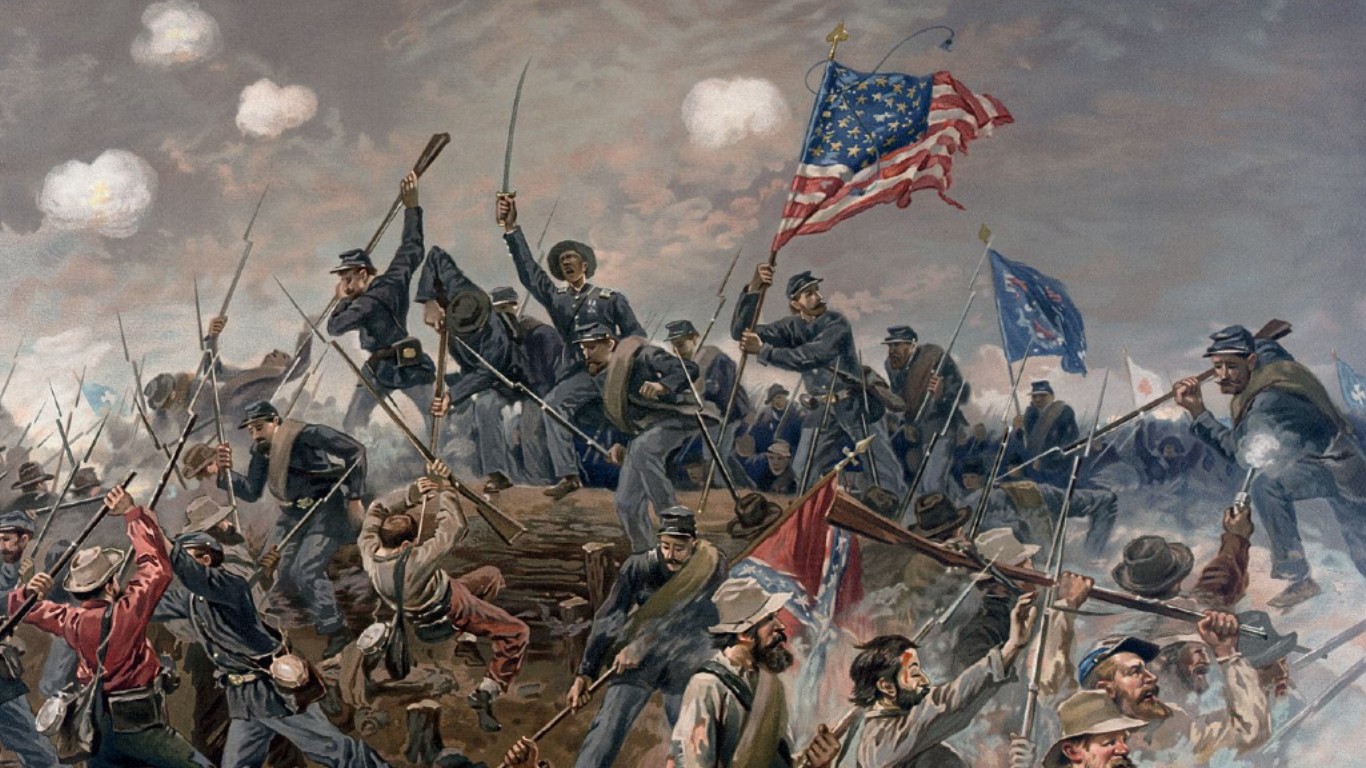
3. Battle of Spotsylvania Court House
> When: May 9-21, 1864
> Total casualties: 30,000
> Fatalities: 4,240
After the Battle of the Wilderness, Confederate and Union forces clashed again at the Spotsylvania Court House in Virginia. Over 12 days, Ulysses S. Grant’s Army of the Potomac and Robert E. Lee’s Army of Northern Virginia battled as both sides inflicted huge losses. But the battle was ultimately considered a stalemate as Grant disengaged his troops. Yet Grant kept up his march on the Confederate capital, forcing Lee to order his troops to deploy between the Union forces and Richmond.
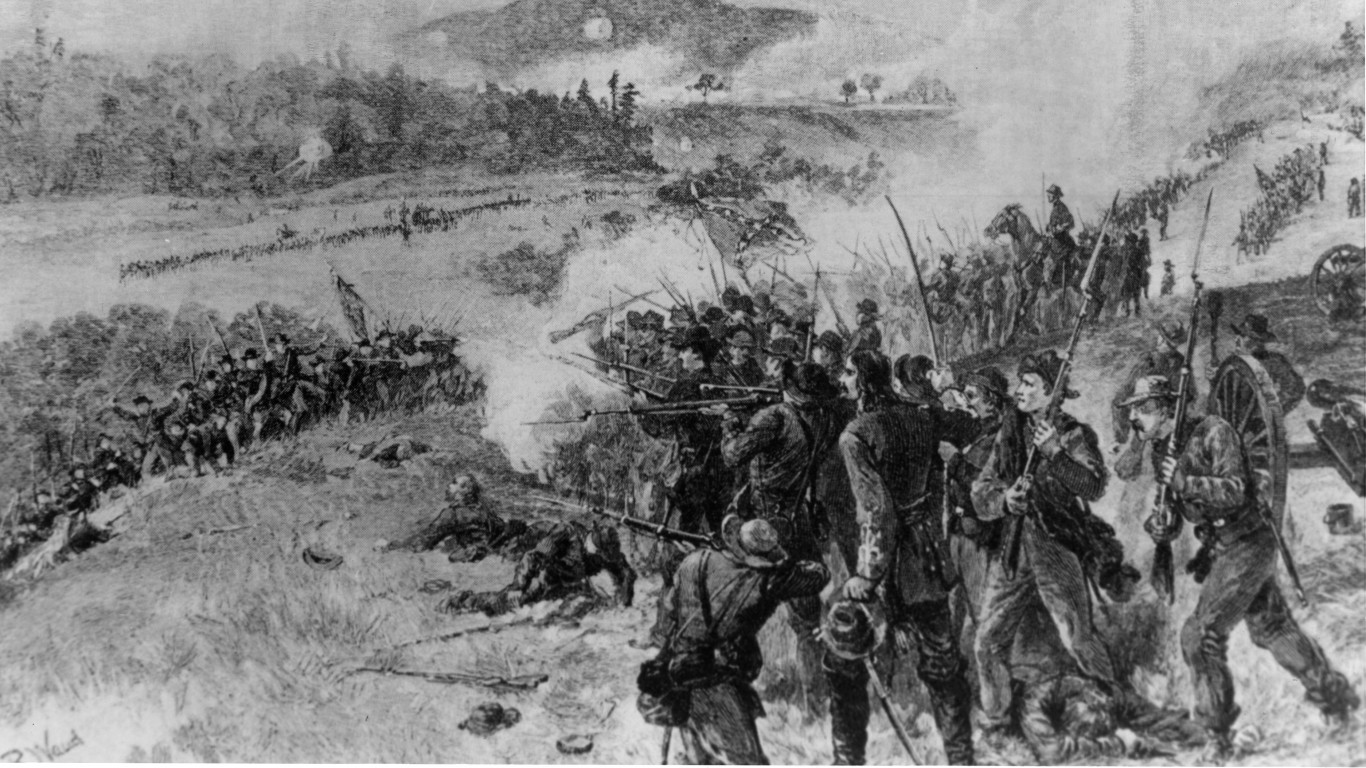
2. Battle of Chickamauga
> When: Sept. 18-20, 1863
> Total casualties: 34,624
> Fatalities: 3,969
The Army of Tennessee led by General Braxton Bragg initially defeated a force commanded by Union General William Rosecrans at Chickamauga, Georgia. When Bragg failed to build on the initial success, he allowed the Federal troops to reach Chattanooga. Reinforced by troops led by Ulysses S. Grant, the Union overtook Chickamauga, reversing what could have been a decisive victory for the South.
[in-text-ad-2]
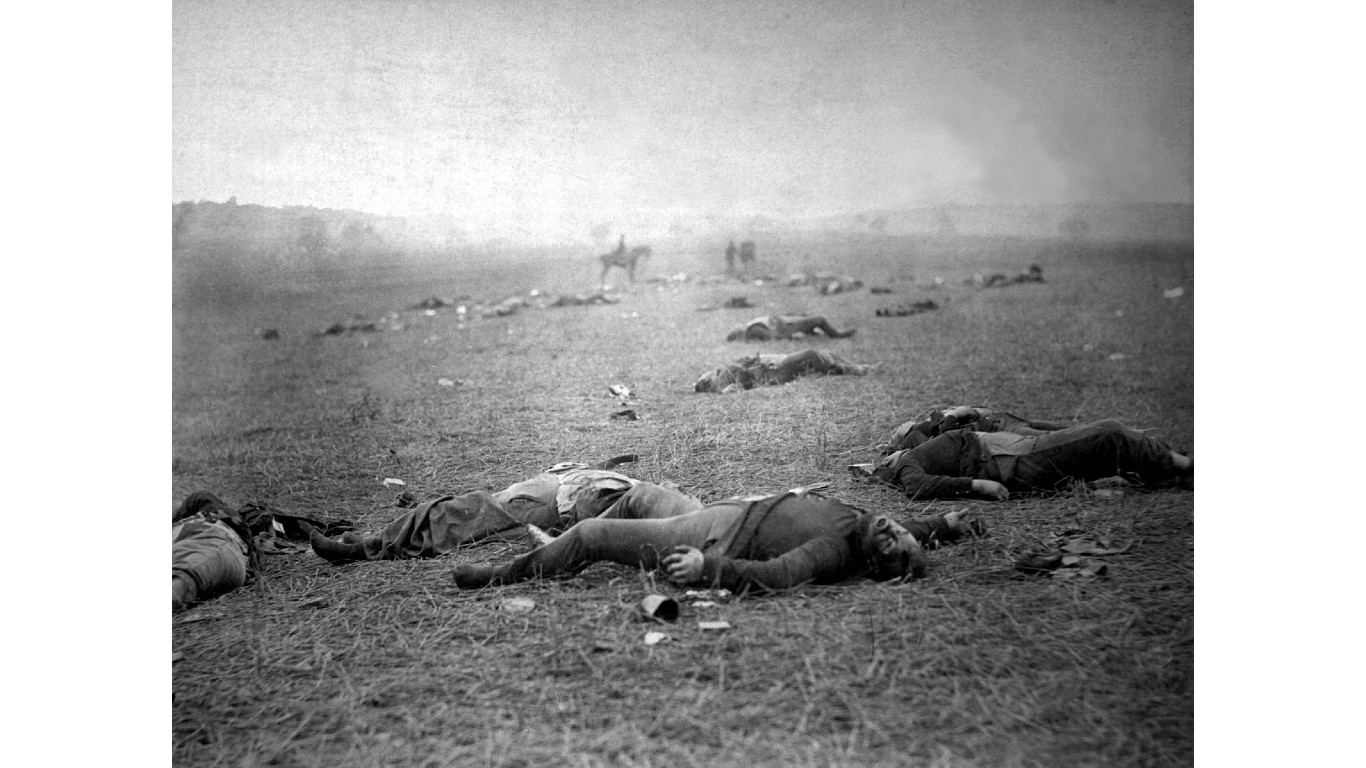
1. Battle of Gettysburg
> When: July 1-3, 1863
> Total casualties: 51,000
> Fatalities: 7,058
The Battle of Gettysburg was the pivotal battle of the Civil War. After his victory at Chancellorsville, Robert E. Lee’s Army of Northern Virginia marched into the small town of Gettysburg, Pennsylvania. There, Lee’s army clashed with Federal troops led by General George G. Meade. Both sides suffered heavy losses. But when Lee’s troops failed to break the Union line at Cemetery Ridge, the Southern general retreated on July 4 and his advance on the North was halted.
Credit Card Companies Are Doing Something Nuts
Credit card companies are at war. The biggest issuers are handing out free rewards and benefits to win the best customers.
It’s possible to find cards paying unlimited 1.5%, 2%, and even more today. That’s free money for qualified borrowers, and the type of thing that would be crazy to pass up. Those rewards can add up to thousands of dollars every year in free money, and include other benefits as well.
We’ve assembled some of the best credit cards for users today. Don’t miss these offers because they won’t be this good forever.
Flywheel Publishing has partnered with CardRatings for our coverage of credit card products. Flywheel Publishing and CardRatings may receive a commission from card issuers.
Thank you for reading! Have some feedback for us?
Contact the 24/7 Wall St. editorial team.
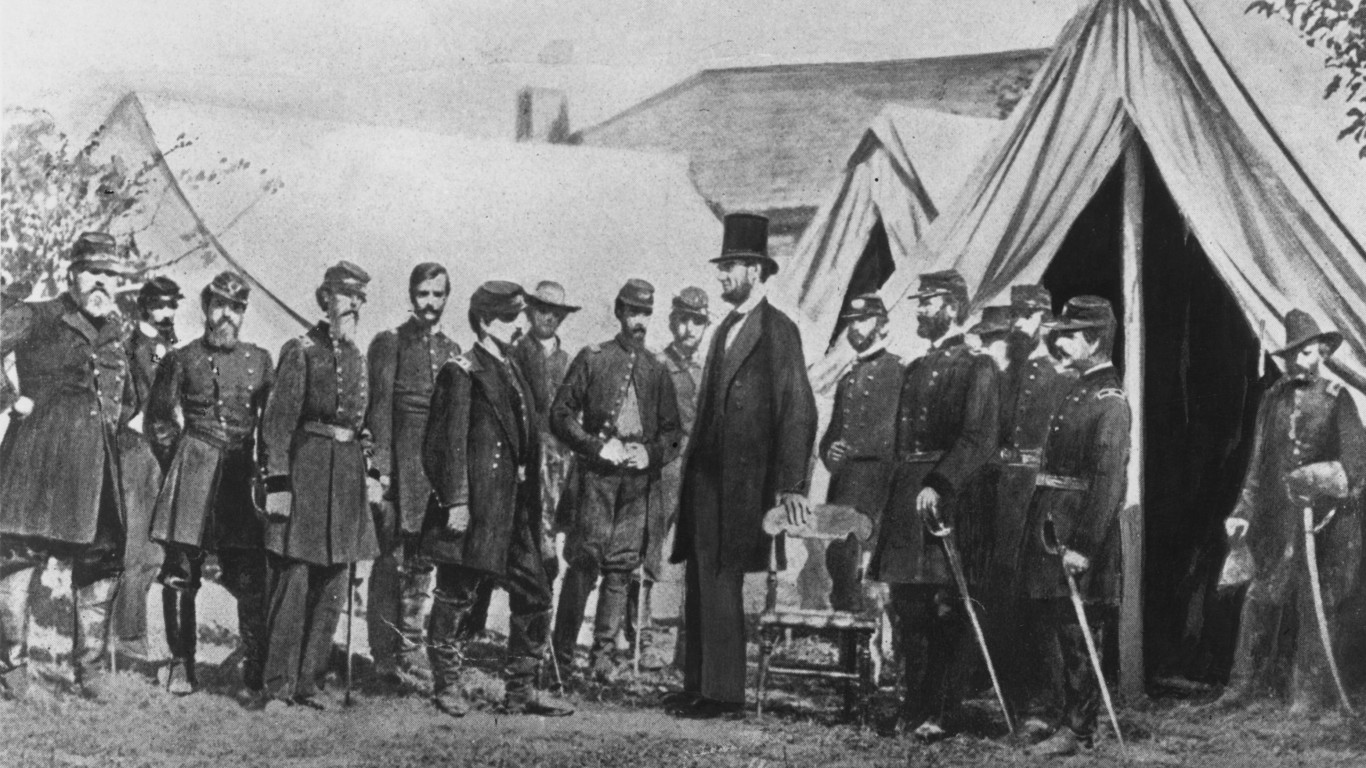 24/7 Wall St.
24/7 Wall St. 24/7 Wall St.
24/7 Wall St.